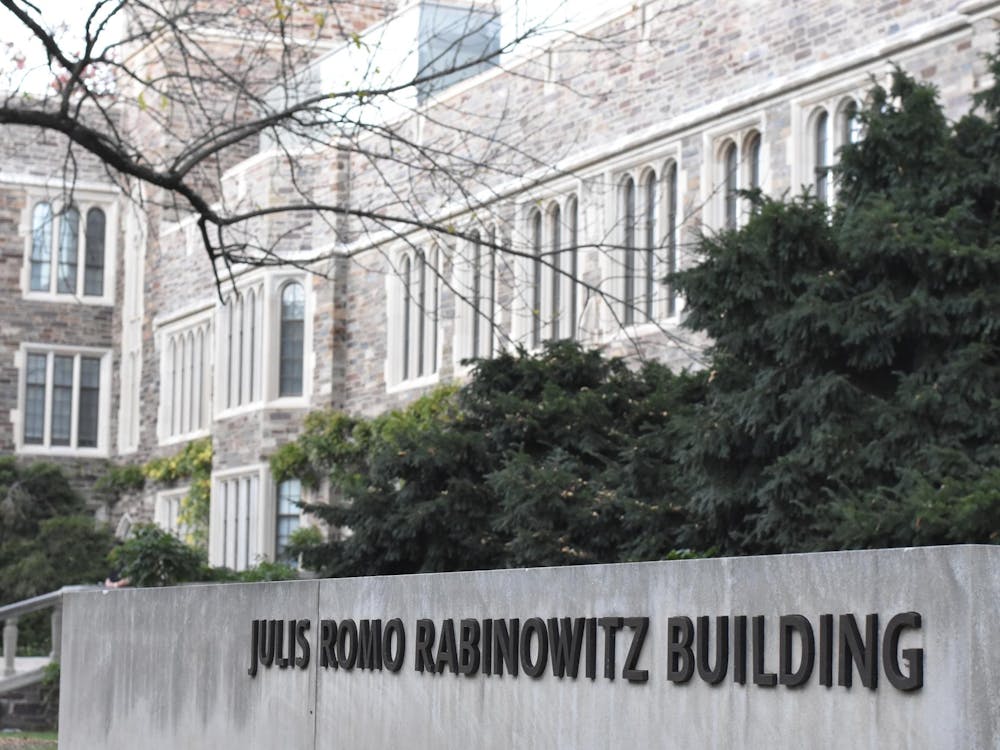The issue of laptops in lectures and seminars is consistently revisited by The Daily Princetonian. Over the past three years, there have been five articles on the topic. In 2006, Avi Flamholz ’07 wrote a column suggesting that the threat of laptops to education was so great that he’d “probably have to leave the PowerBook in [his] room from now on.” Last year, the ‘Prince’ Editorial Board argued, “Laptops pose more bane than boon.” The ‘Prince’ board and Flamholz both failed to recognize the convenience and the environmental savings of digital reading.
This academic year, I’ve started the process of going paperless. Most of my readings are on E-Reserves, so I can download the PDFs, open them in Adobe Acrobat Standard, run Optical Character Recognition and then highlight text, add bookmarks and write notes within the file. Now all of my readings are searchable by text, notes and traditional page number. Having a digital workflow allows me to quickly scroll and search through books, and it’s easy to copy and paste quotes into term papers. With this technology, I can carry all my notes and readings in my laptop, which I bring everywhere anyway. While I would like to take credit for creating this system, Google has created the largest library of digitized literature for many of the reasons I mentioned above.
The ease of use is accompanied by a meaningful reduction in paper waste and clutter. Throughout my Princeton career I have had folders and binders exploding with papers, notes and readings that I rarely read in the first place, let alone went back to later in the semester. Now, the only paper waste I have is from teachers who hand out their syllabi, though they are accessible to me through Blackboard. This waste can easily be cut down by having students print out the materials they need. Reading and note-taking tends to be a solitary endeavor, and as such students should be able to find a workflow that works best for them, whether its all digital, traditional paper or some mix of the two.
There are, of course, problems with making the switch to digital. Many textbooks haven’t been digitized, and there is a format war between digital publishers. Another problem is that e-readers, which provide the best digital reading experience, are expensive and cumbersome, and traditional LCD monitors cause eye strain. But as new e-ink technology emerges and publishers choose a single digital format, many of these problems will disappear.
The greatest barrier to my goal of going paperless is Princeton’s professors and preceptors. Professors have consistently voiced concerns about the introduction of new technology in the classroom. In a March 10, 2009, article in the ‘Prince,’ professor Jeff Dolven said, “I think that someone with a pen is more likely to be thinking with me than someone with a laptop.” Whether his concern is one of aesthetics or education, neither is resolved by banning laptops.
Regarding the classroom aesthetic, I doubt Dolven requires students to use quills or to purchase books published through the toxic process of hot metal typesetting. If his concern is educational, there are legitimate problems that laptops in the classroom bring up. Teachers have failed to realize, however, that none of these problems is new or threatening.
Students can easily be tempted to multitask on laptops during class. But you can also multitask without laptops by passing notes or texting. And while laptops do provide distractions, Professor Rosen noted in the same article that even he doodled in class asking, “Would you like to see the notebooks in which I was doodling?”
New technologies present new problems, but sometimes old fixes still work. One of my professors has this simple rule, if a student is found checking e-mail, his or her grade for classroom participation is an automatic zero.
Unfortunately, the software which allows sharing notes, highlighting and text recognition can be expensive. Adobe Acrobat Standard 9 costs $235. The University can aid the transition to paperless learning by subsidizing note-editing software and searching for publishers that have digital editions of books. Similarly, the University should encourage professors and departments to stop printing readings and syllabi and instead let students print what they need. With the recent announcement of a quota system to discourage over-printing, these reforms are all the more necessary.
Michael Collins is an anthropology major from Glastonbury, Conn. He can be reached at mjcollin@princeton.edu.








